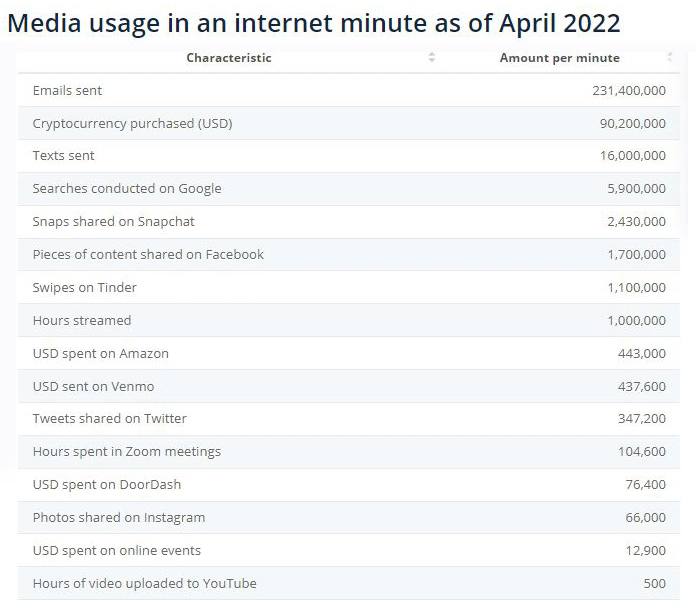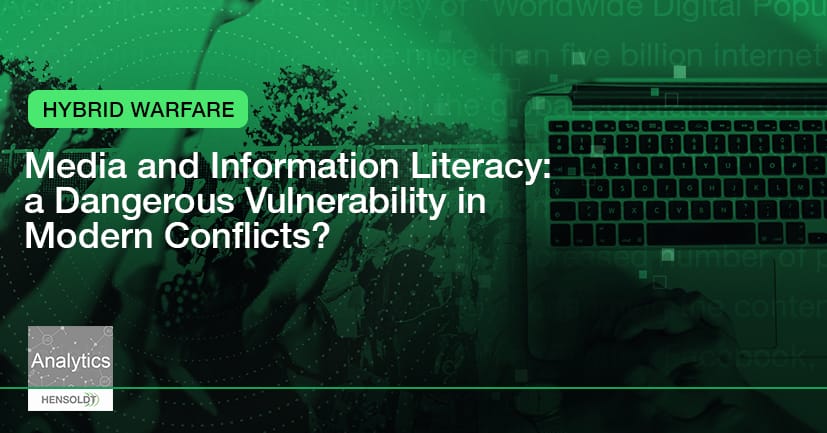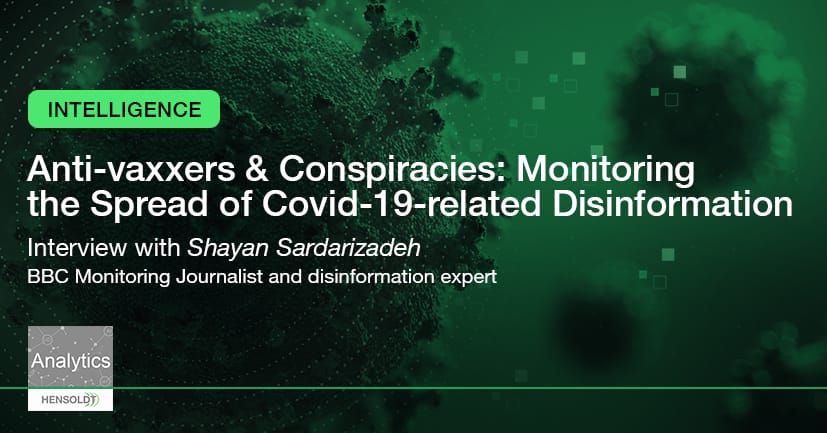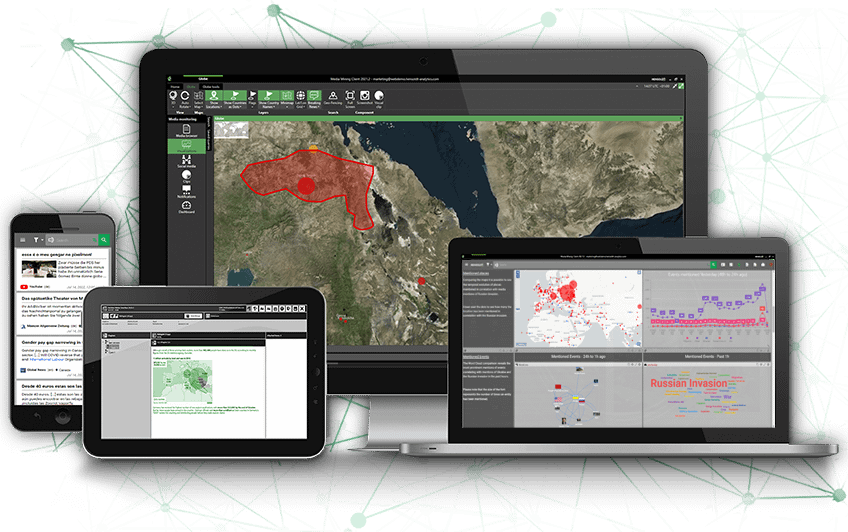According to Statista’s survey of “Worldwide Digital Population,” as of April 2022, there were more than five billion internet users worldwide, which is 63.1% of the global population. Of this total, 4.7 billion, or 59% of the world’s population, were social media users. In recent years it has become more evident that there is a very dangerous dimension of the increased number of people actively engaging with or passively consuming the content available on online platforms, such as Twitter, Facebook, or TikTok. Namely, the rise of malicious information campaigns, which spread organically through regular users and gain a foothold amongst specific groups within our societies using manufactured and often exaggerated narratives. Such tactical use of social media is here to stay and even increase as, according to Aslam et al [1], “social media’s ability to replicate information at high speeds with low costs, as well as difficultly to authenticate accuracy and sources of information”, makes social media the most effective propaganda tool for achieving specific military objectives in specific conflicts.
While it is not surprising that the digital domain has become the stage for influence campaigns, their rate of effectiveness has been alarming. Especially in the last three years, the results of these orchestrated efforts of influencing public opinion included weakened trust in the media; distrust towards state institutions and governments; violent behaviours, or even questioning directives from key health authorities during a global pandemic. The ease of disinformation, misinformation, as well as conspiracy theories spilling out of niche communities into wider circles of social media and mainstream media invariably leads to the following question:
Is the current state of media and information literacy globally a dangerous vulnerability in modern conflicts?
What is Media Literacy?
According to the Center for Media Literacy, media literacy “provides a framework to access, analyze, evaluate, create and participate with messages in a variety of forms — from print to video to the Internet. Media literacy builds an understanding of the role of media in society as well as essential skills of inquiry and self-expression necessary for citizens of a democracy”. The definition by CML highlights the participatory element of digital citizenship, also in terms of creating media, something that has only become more relevant and grown significantly in the last decade. The total amount of data created, captured, copied, and consumed globally reached 64.2 zettabytes in 2020 and is forecasted to more than triple by 2025 (Source: Statista), a staggering quantity accelerated by the extended periods of lockdowns between 2020 and 2021.

All further information on this statistic can be found at Statista
The natural companion of the media literacy skill is information literacy, which is defined as a “set of integrated abilities encompassing the reflective discovery of information, the understanding of how information is produced and valued and the use of information in creating new knowledge and participating ethically in communities of learning” (Association of College and Research Libraries). Both competencies – further abbreviated as MIL – equip people with the ability to think critically about the information found online, a particularly important quality since the proliferation of “fake news” and disinformation campaigns that led to harmful behaviours trailblazed by the COVID-19 infodemic, the rise of false and deliberately misleading information related to the coronavirus pandemic.
COVID-19 Infodemic was the Modern Blueprint for Successful Influence Campaigns
The global coronavirus pandemic became the advent of disinformation campaigns at a scale previously unseen. But what truly sounded the alarm bells was the linkage between people embracing the disinformation circulating online and employing behaviours that endangered the health and well-being of themselves and their surroundings [2].
„Disinformation is false or misleading content that is spread with an intention to deceive or secure economic or political gain, and which may cause public harm. Misinformation is false or misleading content shared without harmful intent though the effects can be still harmful.”
The European Commission, Tackling Online Disinformation #FactsMatter
A 2020 study [3] attempted to determine if COVID-related behaviours differed according to trust in left-leaning or right-leaning media and how differences changed over the first several months of the pandemic. The results indicated that “compared with those who trust CNN more than Fox News, people who trust Fox News more than CNN engaged in fewer preventive behaviours and more risky behaviours related to COVID-19” (Zhao et al.). The impact was also felt once the long-awaited vaccine began rolling out leading to significant vaccine hesitancy [4]. In a brief publication shared in October 2021 under the title of “COVID-19 Vaccine Misinformation and Disinformation Costs an Estimated $50 to $300 Million Each Day”, Bruns et al estimated that misinformation and disinformation caused “between 5% and 30% of voluntary nonvaccination in the United States” at that time.
Read also: Anti-vaxxers & Conspiracies: Monitoring the Spread of Covid-19-related Disinformation – interview with Shayan Sardarizadeh, BBC Monitoring Journalist and disinformation expert.
In this climate of unrest, polarization, and general unhappiness with the local governments across the globe, the infodemic significantly lowered the national immunity systems to external threats. Namely, the involvement of foreign actors, who used manufactured pseudo-coronavirus narratives to spread anti-governmental messages.
Disinformation as a Tool of Modern Hybrid Conflict
The digital space has become one of the elements of modern hybrid warfare. Hybrid warfare is “a theory of military strategy, first proposed by Frank Hoffman, which employs political warfare and blends conventional warfare, irregular warfare, and cyberwarfare with other influencing methods, such as fake news, diplomacy, lawfare and foreign electoral intervention” (Source).
The primary goal of hybrid warfare actors weaponizing information is to destabilize the adversary. Destabilization can take different forms such as creating an environment of polarization, which leads to social unrest; nurturing distrust towards institutions and actions thus eroding the influence of the governing bodies. All of these, to different degrees, lead to the weakening of societies. (Read more: Hybrid Warfare: Modern Battlefield is Multi-Domain).
The COVID-19 pandemic and the resulting infodemic saw a much more active involvement of Russian, Chinese, and Iranian actors, who pushed disinformation related to the coronavirus to influence Western societies. The strategy is not new: there had been documented examples of Russian bots and troll farms nurturing the anti-vaccine debates in the realm of Western social media in the past, targeting the US in particular [5]. In 2020, the discussions occurring in the early stages of the pandemic were soon inundated with information campaigns questioning leading politicians and their competencies in the wake of implementing COVID-19 safety measures. As such, regular users on Twitter or Facebook would be shown content concealed as originating from the US on a “variety of divisive partisan themes, such as suggestions that Biden was benefiting from Trump’s hard work to combat the pandemic while ignoring other issues such as rising US inflation” (source: Memes, Magnets and Microchips: Narrative dynamics around COVID-19 vaccines 2022 report).
How was it possible that the COVID-19-related disinformation was so effective in convincing people that the vaccine poses a greater health risk than the illness it’s supposed to protect against?
How did the messages staged by foreign actors blend with the existing conversations so seamlessly before being spotted by experts?
There is no simple answer to the questions as they touch upon a variety of circumstances: from different cultures, values, missing legislative frameworks, distrust towards local media, to the architecture of the social media platforms. However, one matter is certain: to equip modern states to withstand orchestrated disinformation campaigns, countries need to empower their citizens to be media and information-literate.
To equip modern states to withstand orchestrated disinformation campaigns, countries need to empower their citizens to be media and information-literate.
Media and Information Literacy Skills are Needed to Prepare for the Hybrid Warfare Conflicts
Resilient, information-literate societies are one of the defences against the advanced forms of hybrid warfare, which employ sophisticated influence campaigns. Developing the ability to critically look at the content that appears on our social media feeds is of even more relevance now that certain age groups were identified to spend more time consuming videos than text – with attribution and content sources not being immediately available or not being provided at all. For example, TikTok has become the fastest growing network reaching 40% of 18–24s, with 15% using the platform for news according to the Reuters Institute Digital News Report 2022. Preliminary research published by the Global Witness and the Cybersecurity for Democracy team at New York University suggests that TikTok is failing to block election misinformation ads in the review process in the weeks leading up to the US midterm elections.
One of the most notable examples of a country implementing media literacy programs is Ukraine [6], which right now is actively involved in a hybrid conflict with Russia. The institutionalisation of the media literacy promotion process started 10 years ago in 2021. The Concept of Media Literacy in Ukraine encompasses several programs, including a specialised program for universities or the “Learn to Discern in Education” by the Ukrainian Ministry of Education and Science to integrate critical information consumption skills into existing secondary school curricula and teacher training. According to the Media Literacy Sector Mapping in Georgia, Latvia, Moldova and Ukraine 2021 report by the Baltic Centre for Media Excellence, “due to the efforts of a variety of actors put into the “training of trainers” activities, a generation of media literacy experts emerged in Ukraine”.
It’s clear that neither the governments on their own nor the companies in charge of the social media platforms can keep up with the task of preventing harmful information, moderating content, and reporting instances of an ongoing disinformation campaign. A harmonised, coordinated effort from multidisciplinary stakeholders is necessary to stop the influx of hybrid warfare elements leaking into the online spaces to plant messages meant to cause social unrest. This involves educating the digital citizens of today on how to become proficient in media and information literacy to nurture a strong and resilient Europe.
A resilient society possessing of strong MIL skillset is capable of supporting government efforts to detect and mitigate information warfare, providing a strong foundation against disinformation, fake news, and conspiracy theories disseminated in social and traditional media.
Media and Information Literacy Resources, that might interest you:
- Reuters Digital News Report 2022 Digital News Report 2022 | Reuters Institute for the Study of Journalism (ox.ac.uk)
- United Nations Verified and wikiHow [ online course ] How to Fight Misinformation Online
- The Intelligence Brief Podcast Season 1 Episode 2 | Anti-vaxxers & Conspiracies: Monitoring the Spread of Covid-19-related Disinformation with Shayan Sardarizadeh, BBC Monitoring journalist and disinformation expert
- Informational Instruments of Power in Hybrid Campaigns & The Role of Disinformation and Fake News, 2021 [ webinar recording ]
- Learn – EUvsDisinfo
- Media and Information Literacy and Intercultural Dialogue University Network – publications
References:
[1] Aslam S, Hayat N, Ali A (2020) Hybrid warfare and social media: need and scope of digital literacy. Indian Journal of Science and Technology 13(12): 1293-1299. h ttps://doi.org/ 10.17485/IJST/v13i12.4
[2] Bin Naeem, S.; Kamel Boulos, M.N. COVID-19 Misinformation Online and Health Literacy: A Brief Overview. Int. J. Environ. Res. Public Health 2021, 18, 8091. https://doi.org/10.3390/ijerph18158091
[3] Zhao E, Wu Q, Crimmins EM, et al. Media trust and infection mitigating behaviours during the COVID-19 pandemic in the USABMJ Global Health 2020;5:e003323.
[4] Wilson SL, Wiysonge C. Social media and vaccine hesitancy. BMJ Glob Health. 2020 Oct;5(10):e004206. doi: 10.1136/bmjgh-2020-004206. Epub 2020 Oct 23. PMID: 33097547; PMCID: PMC7590343.
[5] Broniatowski DA, Jamison AM, Qi S, AlKulaib L, Chen T, Benton A, Quinn SC, Dredze M. Weaponized Health Communication: Twitter Bots and Russian Trolls Amplify the Vaccine Debate. Am J Public Health. 2018 Oct;108(10):1378-1384. doi: 10.2105/AJPH.2018.304567. Epub 2018 Aug 23. PMID: 30138075; PMCID: PMC6137759.
[6] de Andrade Gama, Isabela and Wiktor Mozgin (2021) Media Literacy and its Role in Countering Hybrid Warfare (the Case of Ukraine). Future Human Image, Volume 15, 4-13. https://doi.org/10.29202/fhi/15/1






